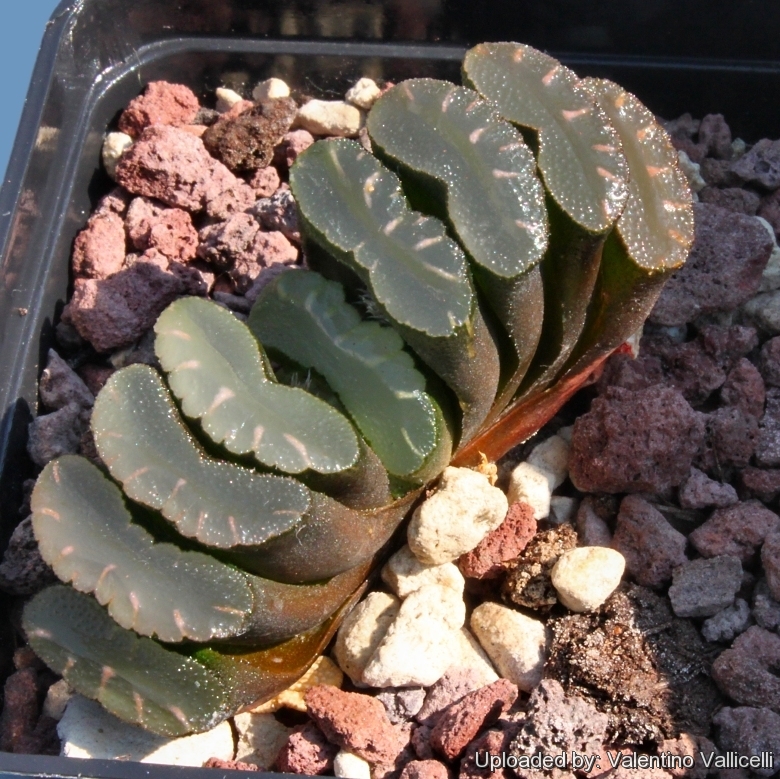
Haworthia truncata Photo by: Valentino Vallicelli
Origin and Habitat: South Africa (Western Cape: Little Karoo) in Oudtshoorn area (in a number of locality, Volmoed, Vanwykskraal, Dysselsdorp etc.)
Habitat: They grow in the shade of bushes and occasionally in open areas. They grow underground with only the apex of the leaves rising above the soil surface so that they are difficult to find. This is an excellent protection against herbivores . This very singular plant has contractile roots that will pull the plant into the ground during times of drought, leaving only the windowed tops exposed.
Synonyms:
See all synonyms of Haworthia truncata
Description: This desirable species, despite the fact that actually is common in cultivation, still inspires trepidation and admiration by way of its unusual truncate leaf tips. It is a superb plant, unique, distinctive and very different for any collection.
Habit: Stemless distichous plants, medium sized with windowed leaves on upper margin. Solitary or slowly clumping depending on the clone (Unpredictably, some plants remain unbranched, while others readily cluster)
Leaves: The leaves look as if they have been roughly cut off at the tops and they are arranged like a fan, not a rosette. As the plant grows take on an almost crested appearance. The leaf size and thickness, of the end-areas will vary greatly from clone to clone. The surface is warty and the blunt end is transparent whit some interesting leaf markings, others are rather plain, this "lightning flash" patterns in the leaves do not come out until the plant reaches maturity.
Fenestrate leaves: This plant is a choice example of the window-leaf ( fenestrate leaf) adaptation found in many Haworthias, Mesembreanthemums and Peperomias, the translucent 'glassy' windowed apices allow light into the internal plant body rich in chlorophyll-bearing layers of cells, thereby providing a much larger assimilation area. The windows greatly increase the photosynthesizing area by allowing light into the centres of leaves and at the same time avoiding water loss.
Remarks: This species has been the subject of passionate work of breeding and selection by the Japanese, and a number of wonderful cultivars with white lacy patterns on green-grey windowed tips have been developed and propagated, and some specimens have a very unique leaf shape.
Subspecies, varieties, forms and cultivars of plants belonging to the Haworthia truncata group
Notes: Contractile roots pull this plant deeper into the soil to protect it from sun and heat during the dry season. Contractile roots are found in many plants species mainly at the base of an underground organ (bulb, corm, succulent rosette, etc.) The contractile roots continually pull the plants deeper into the ground as the stem elongates so the it remain subterranean or at an appropriate level in the ground.. Contractile roots are usually broad, fleshy, vertical, tapering, wrinkled looking and very distinct of the rather cylindrical fine absorbent roots and are capable of incredible effort.
In most cases, contractile roots not only produce a strong pulling force on but also push away the substratum and create a soil channel in which plant movement is made easier. For example in Haworthia the fleshy contractile roots swell with moisture in the wet season creating a space in the substrate then - after the full drying out of soil during the dry season - a considerable parts of this roots die off leaving empty spaces in the substratum that allow plant movement with minimum or no resistance, at the same time the other roots dehydrates and shrinks vertically, drawing the plant down into the ground. This is repeated early permitting the top of the plant to remain constantly at the soil level.
Bibliography: Major references and further lectures
1) Linda R. Berg “Introductory Botany: Plants, People, and the Environment” Cengage Learning, 02/Mar/2007
2) Dieter J. Von Willert “Life strategies of succulents in deserts: with special reference to the Namib desert” CUP Archive, 1992
3) Urs Eggli “Illustrated Handbook of Succulent Plants: Monocotyledons” Springer, 2001
4) Charles L. Scott “The genus Haworthia (Liliaceae): a taxonomic revision” Aloe Books, 1985
5) Stuart Max Walters “The European Garden Flora: Pteridophyta, Gymbospermae, Angiospermae-Monocotyledons” Cambridge University Press, 1984
6) M. B. Bayer “The new Haworthia handbook” National Botanic Gardens of South Africa, 1982
7) John Pilbeam “Haworthia and Astroloba: A Collector's Guide” B. T. Batsford Limited, 1983
8) Gordon D. Rowley “The illustrated encyclopedia of succulents” Crown Publishers, 01/Aug/1978
 Haworthia truncata Photo by: Gennaro Re
Haworthia truncata Photo by: Gennaro Re Haworthia truncata Photo by: Viviana Alejandra Castro
Haworthia truncata Photo by: Viviana Alejandra Castro Haworthia truncata Photo by: Cactus Art
Haworthia truncata Photo by: Cactus Art Haworthia truncata Photo by: Valentino Vallicelli
Haworthia truncata Photo by: Valentino Vallicelli Haworthia truncata Photo by: Cactus Art
Haworthia truncata Photo by: Cactus Art Haworthia truncata Photo by: Cactus Art
Haworthia truncata Photo by: Cactus Art Haworthia truncata Photo by: Valentino Vallicelli
Haworthia truncata Photo by: Valentino Vallicelli Haworthia truncata Photo by: Cactus Art
Haworthia truncata Photo by: Cactus ArtCultivation and Propagation: Not difficult to cultivate, though it is not fast growing and takes several years to form good looking heads. Haworthias are very responsive to differing cultural conditions both as regards colour, length and shape of leaves, rate of growth and size of plant.
Soil: It grows best in sandy-gritty soil and requires good drainage as it it is prone to root rot.
Fertilization: Feed it once or twice during the growing season with a fertilizer specifically formulated for cactus and succulents (poor in nitrogen), including all micro nutrients and trace elements diluted to ½ the strength recommended on the label.
Repotting: Must be repotted frequently, because every year a part of their roots die and then rots in the pot. Needs a deep pot to accommodate the long, thick, contractile roots.
Watering Needs: Water regularly in the growing season, but avoid water-logging and let dry between watering, they should never dry out completely during the rest period. If grown in a container, bottom watering by immersing the container is recommended. It must have very dry atmosphere.
Sun Exposure: Keep cool and shaded in summer, and provide locations with diffuse sunlight or light shade, it can tolerate shade, shelter from direct sun during the hottest hours. In shade the body colour will remain more green, while full sun will darken a lot. It can be sunburned if moved from shade/greenhouse into full sun too quickly. The amount of sunlight it can withstand without scorching depends upon the how hot it becomes in the summer in the locale in which it is planted. During the spring it may be able to take full sun until the heat arrives at the end of spring. In an area that has hot afternoon sun, it may be able to take full morning sun, but requires afternoon shade or afternoon light shade.
Frost Tolerance: Light frost protection required. It requires a minimum temperature of about 5°C (But will take a light frost and is hardy down to -5(-7)° C for short periods if it is in dry soil). USDA zones 9A – 11. In areas prone to frost, grow in an intermediate greenhouse or conservatory, in pots.
Pests and diseases: May be susceptible to mealybugs and rarely scale.
Propagation: Seeds, offsetts, leaves and roots cuttings. Leave the offsets that appear at the base between the leaves attached to form a cluster, or wait until they are 1/3 the size of the parent and then detach and plant. Cuttings root easily and remain true to the species, while seeds tend to hybridize.
Your Photos
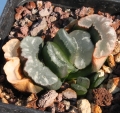
by Valentino Vallicelli
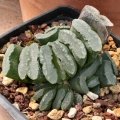
by Valentino Vallicelli
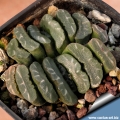
by Cactus Art

by Valentino Vallicelli
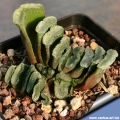
by Cactus Art
























